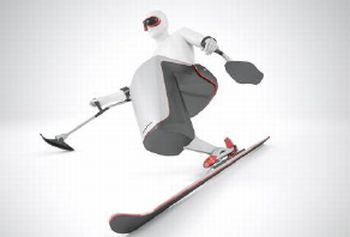 |
|
Monoski can be
used by people with disabilities in their lower limbs. With
its light, innovative architecture, it is designed to
guarantee high performance. The objective: the Vancouver
2010 Winter Paralympics. The monoski designed by Pininfarina
is a highly advanced piece of sports
equipment with absolutely innovative design
and manufacturing features. |
|
|
|
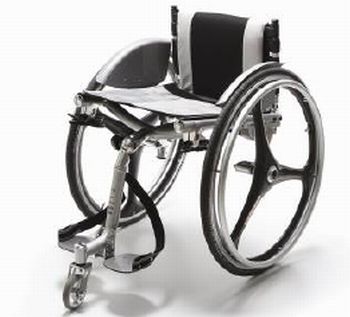 |
|
The multipurpose wheelchair is transformed
in a few easy movements to adapt to every
need, and then fold up to fit into a
backpack. With just a few movements and
simple accessories it allows a disabled
person to do sports and to travel over any
type of terrain. |
|
|
|
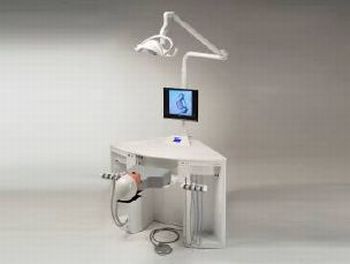 |
|
Smily is a revolutionary simulation unit for
Faculties of Dentistry, produced by
Saratoga, designed by Pininfarina and
developed with the backing of a committee
made up of eminent professors from the
Italian College of Dentistry Teachers. Its
shape and dimensions were created to be
accessible even to students in wheelchairs,
paying particular attention to the
aesthetic, functional and ergonomic
innovations. |
|
|
|
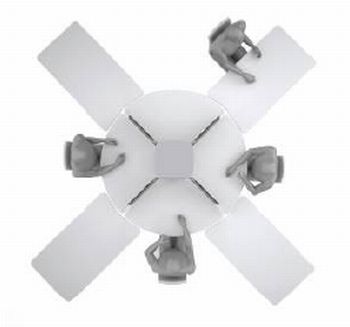 |
|
An innovative modular system for the office:
at the centre of the work station is a
technological “tree” with built-in lights
and, all around it, desks, worktops and
drawer units arranged to encourage both
individual creative work and team work. The
system was studied to respect the minimum
distance of 50 cm between the operator and
the computer monitor. |
|
|
|
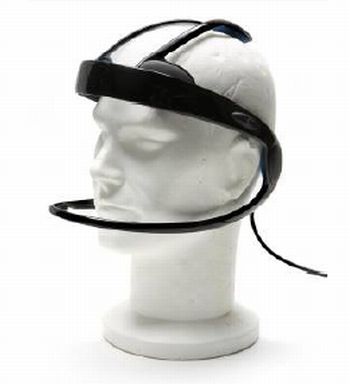 |
|
C.H.I. (Computer Hand-Free Interface) is a
helmet based on electro-optical technology
that makes it possible to emulate all the
classic functions of the mouse perfectly.
The cursor follows the user’s head
movements, which means that the computer can
be used by someone who is unable to use his
hands: this is made possible by an emitter
of modulated infrared rays positioned above
the monitor and a sensor solid with the
user’s head. |
|
|
|
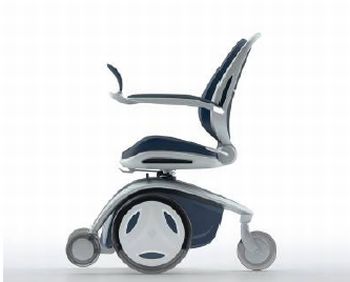 |
|
Design enters the electric wheelchair market
with aesthetical and functional innovations.
The chair designed by Pininfarina Extra for
the Chinese company Shanghai Forever Co. is
the first of its kind and has iconic styling
that departs from the hospital image,
transmitting lightness, simplicity and
elegance in its harmonious, compact
proportions and in the colour range. |
|
|
|
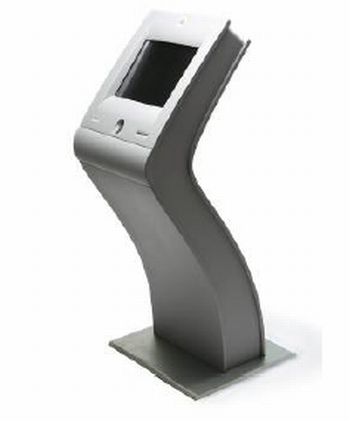 |
|
An electronic polling booth for remote
voting. Access to vote is guaranteed by an
easy-to-use, ergonomic system. People with
physical or sight disabilities can vote
without outside help. Pininfarina Extra has
collaborated with the European research and
development and marketing validation
programme for electronic voting known as
E-Poll. |
|
|
|
|
To mark Torino 2008 World Design Capital,
Pininfarina Extra, in collaboration with Polytechnic of
Torino, the IED, the AbleToEnjoy company and CEAN, is
exhibiting innovative solutions that combine design and
practicality, allowing environments and products to be
enjoyed by a wide public with different perceptive, motor
and cognitive abilities.
The exhibition, DesignAbility, is open to the public today
and tomorrow (Saturday and Sunday, November 15 and 16, from
9am to 6pm). DesignAbility has been created to underline the
importance of design in every area of our life. A journey to
discover the most innovative elements of contemporary design
that can overcome the conflict between man and environment
in every context: work, sport, mobility, study and research.
The projects elaborated by Pininfarina Extra and its
partners reveal design that is accessible to everyone, made
up of objects, equipment and environments that can be
exploited autonomously by users with diversified needs and
abilities, including people who have functional limits
because of their age or because of malformations, medical
conditions or traumas: from the monoski designed in
preparation for the Vancouver 2010 Paralympic Games, to the
first electrical wheelchair designed by Pininfarina, an
electronic device for the PC that makes a mouse unnecessary,
and a modular office system.
“Society must come to terms with the
culture of socially conscious planning,” explained Paolo
Pininfarina, President and CEO of Pininfarina Extra. “For
this reason, we chose to showcase DesignAbility during the
events to mark Torino World Design Capital, which gives the
city and the whole of Piedmont a crucial international role
to play. Local points of excellence, where the influence of
design cuts across the various contexts, can create a new,
better balanced, sustainable economic and social system. In
this context, we want to show that design really can and
must be enjoyed by all members of society, regardless of
their individual abilities.”
Exhibition Layout
The innovative DesignAbility exhibition layout was studied
by DISET, the Department of Building and Territorial Systems
Engineering of Turin Polytechnic. In line with the
multisensory issues addressed, the space and areas of the
exhibition were organised taking as a “leitmotif” the
abilities of the general public: the elderly and children,
and people with sight, motor and sensory impairments. The
visitor is guided towards the Pinin Room, helped by a rubber
and PVC path designed by the Mondo company to make things
easier for the blind and partially sighted, where an
itinerary made up of 8 exhibition areas addresses the issue
of design that is accessible to everyone: objects, equipment
and environments that can be exploited autonomously by users
with a wide range of needs and abilities. A tactile map of
the exhibition is also provided for the visually challenged,
and in some cases (like the Torino 2006 Olympic Torch), it
is also possible to touch the object on display.
There are two areas dedicated expressly
to the young: the first contains projects by students in the
2nd year of the course in Industrial Design at the IED of
Turin, who have worked with Pininfarina on the issue of
“Design for all” applied to an urban situation. The second
area contains the work of the 3 finalists of the Shop
Ability International competition for young designers.
Thanks to the E-Poll (an electronic polling booth for
remote voting) every visitor will be able to submit a vote
to select the “popular” winner of the Shop Ability
International competition.
The book project
On the occasion of the exhibition it is
presented the book “DESIGNABILITY”, realised by Pininfarina
Extra in cooperation with the Polytechnic of Torino and
Tactile Vision onlus. The idea behind this book is that it
should be read, seen and touched. It is a tactile book
which tries to involve and inform as many people as
possible. Drawings, pictures, texts, colours and paging seek
to provide understandable notions at different levels and
for all kind of readers. To imagine a book is like doing a
new project, consisting of graphics, of texts and drawings
but of thoughts, dreams and hopes as well: the main goal is
to fulfil the needs of the reader.
The most important idea was to create a
book able to satisfy every degree of reading ability, in the
spirit of the exhibition. That is why this book has a first
part which contains information on several levels. The text
in Braille is overlaid on the traditional text screen
printed in ink; the use of this type of ink in relief
escapes the notice of the inattentive observer, but contains
information that is priceless for fingers that are able to
run down the pages. The text is closely related to the
representation of exhibition objects: on the one hand the
drawing – plane and relief – which follows the dictates of
orthogonal projections to represent the idea comprehensibly
for the person who has to construct a mental image.
Alongside, the photo of the object.
The most detailed
explanations are contained in the second part of the book.
The graphic layout and the font selected – Garamond 16 pt –
were chosen because the most recent studies show this is
easier to read by those with blurred vision. Colours,
contrast levels, simple and repeated graphic layout help to
reinforce comprehension, the idea that underlies the whole
project. In the book you will also find a “maquette”, a
tactile map of the exhibition to help people move round it.
The meaning of DesignAbility includes this idea too: to be
able to design a pleasant-looking book that is also
understandable to every kind of eye.
THE PROJECTS ON SHOW
MONOSKI
A new type of monoski that can also be
used by people with disabilities in their lower limbs. With
its light, innovative architecture, it is designed to
guarantee high performance. The objective: the Vancouver
2010 Winter Paralympics. The monoski designed by Pininfarina
is a highly advanced piece of sports equipment with
absolutely innovative design and manufacturing features. The
style departs from classic convention, underlining an
important evolution for the choice of proportions and in
particular for its unusual height. The line, which is a
particularly effective synthesis of elegance, fluidity and
dynamism, expresses modernity and sportiness. Lightness,
comfort, aerodynamic efficiency, a view of the slope and
easy handling are among the wide range of benefits enjoyed
by a user with a functional disability in the lower part of
his spinal cord and lower limbs. The technological solution
has been patented and regards both the support structure and
the attachment mechanism to a conventional ski with
conventional bindings.
The invention stands out for the
following specific characteristics: rigid link structure
between the seat and the lower part, which allows the chair
to hook onto the chairlift without the user’s intervention;
horizontal suspension kinematics that keep the size of the
suspension to a minimum; motion return system which allows
the shock absorber to be positioned horizontally, parallel
to the suspension struts; new component styling that
satisfies the demand for aerodynamics, ergonomics, user
friendliness, and easy handling. To make up for the limited
ability for control by the upper part of the body, the ends
of the ski sticks are blades shaped like skis, which the
disabled athlete uses to adjust his balance. What is more, a
pelvic containment seat and a bag connected to the seat
support and protect the lower limbs.
Able to enjoy - MULTIPURPOSE CHAIR
A multipurpose wheelchair which is
transformed in a few easy movements to adapt to every need,
and then fold up to fit into a backpack. With just a few
movements and simple accessories it allows a disabled person
to do sports and to travel over any type of terrain. The
project was the brainchild of a young designer and
businessman, himself in a wheelchair, who re-interpreted the
needs of the disabled person, thanks to his own personal and
professional experience. B-Free is the name of the chair,
and it was conceived to give maximum autonomy: by the simple
replacement of a few components, it can tackle the most
diverse terrain and situations, everyday life, the beach,
the snow, off-road and sport.
Fitted with a minute
super-light folding aluminium chassis, the chair is fast,
manoeuvrable and safe, with a linear design, accessories
such as pedals and side panels in plastic and carbon, and
fabrics in numerous different colours. By applying spacers,
a front fork and small antioverturning wheel, the chair can
be used for all types of sport, from tennis to basketball.
With a single small pressure-adjustable front wheel and two
dual rear wheels, the chair can move independently even on
the beach. The same model can also negotiate difficult
itineraries on the snow. The off-road outfit makes it
possible to negotiate mixed itineraries (paving, gravel,
dirt roads), thanks to a fork with a pressure-adjustable
front wheel and dowelled rear wheels.
Saratoga – DENTIST’S SIMULATION UNIT
Smily is a revolutionary simulation unit
for Faculties of Dentistry, produced by Saratoga, designed
by Pininfarina and developed with the backing of a committee
made up of eminent professors from the Italian College of
Dentistry Teachers. Its shape and dimensions were created to
be accessible even to students in wheelchairs, paying
particular attention to the aesthetic, functional and
ergonomic innovations. The simulation unit was conceived to
replicate the various working positions employed in daily
practice, providing all the tools used by the dentist. The
mannequin is positioned in a special compartment, and the
working surface can be used as a desk. As well as being
extremely modular, the unit also incorporates the latest
technologies for audiovisual interaction. A specific
electronic circuit makes it possible to send the film shot
by the telecamera in the teacher’s unit to all students. The
lecturer is able to monitor the students’ work if a
videocamera is installed in each station. What is more, the
students may attract the lecturer’s attention with a
function incorporated in the control touch-screen and the
lecturer can decide to convert the audio/video function from
conference mode to one-to-one mode. The Easy-Teach system
can also be connected to an operating theatre some distance
from the lecture hall. Smily’s particular shape also means
that it can be used as an island or as counter-positioned
units, making more space available inside the lecture hall.
OFFICE SYSTEM
An innovative modular system for the
office: at the centre of the work station is a technological
“tree” with built-in lights and, all around it, desks,
worktops and drawer units arranged to encourage both
individual creative work and team work. The system was
studied to respect the minimum distance of 50 cm between the
operator and the computer monitor. The central tree hides
the many cables, from both the floor and the ceiling. The
project was created in 2004, when Pininfarina Extra moved to
new premises in the headquarters in Cambiano (Torino). On
that occasion, the Extra designers revolutionised the
architecture of the premises on the basis of careful
analysis of the designers’ needs and working methods. This
led to the adoption of an original, patented, modular system
based on a central island, around which the worker can move
easily, with his tools or his wheelchair. The choice of
white as the dominant colour, of recessed lighting and
aluminium finishing elements all help to make the working
environment luminous and comfortable.
COMPUTER INTERFACE
It is called the C.H.I. (Computer
Hand-Free Interface) and it is a helmet based on
electro-optical technology that makes it possible to emulate
all the classic functions of the mouse perfectly. The cursor
follows the user’s head movements, which means that the
computer can be used by someone who is unable to use his
hands: this is made possible by an emitter of modulated
infrared rays positioned above the monitor and a sensor
solid with the user’s head. By measuring the angle of the
incoming infrared rays, the sensor interprets the
inclination of the user’s head and transmits this
information to the computer through a standard serial port,
which positions the cursor on the monitor. So it is possible
to perform all the actions that Windows allows with a single
click of the mouse, such as opening, closing and saving a
file, copying, pasting, etc. The user performs the functions
of the left mouse button by pressing a small rubber tube
with his teeth, this, combined with a pressure sensor,
activates the “click” and “double click” functions that are
indispensable to operate the mouse.
The development
prototype, and the final product, incorporate a microphone
which, together with voice recognition software, makes it
possible to communicate commands and to dictate text, so
that, thanks to the cursor control using his head, the user
has complete control of the computer without using his
hands. As it does with the mouse function, the computer
interprets head movements like the control input from a
joystick, thus making the helmet an ideal tool for games and
entertainment. In a classic flight simulator, the head is
used instead of the control stick that is normally emulated
by the joystick to pilot the plane. To make the helmet light
and also comfortable, so that it can be used for many hours
without tiring the wearer, ergonomic studies were also
undertaken to find the ideal points for it to rest on the
skull.
Shanghai Forever – ELECTRIC WHEELCHAIR
Design enters the electric wheelchair
market with aesthetical and functional innovations. The
chair designed by Pininfarina Extra for the Chinese company
Shanghai Forever Co. is the first of its kind and has iconic
styling that departs from the hospital image, transmitting
lightness, simplicity and elegance in its harmonious,
compact proportions and in the colour range. The Shanghai
Forever chair blends dynamism and elegance, and boasts a
number of innovations ranging from the anatomical seat,
inspired by the racing car world to the use of light,
recyclable materials, greater comfort and rationality in the
operations and greater accessibility. The visible chassis in
satin effect aluminium which terminates in a V on a single
rear wheel is easier to manoeuvre and has more structural
resistance. The chair is powered by two 300 W engines and
two rechargeable 12V batteries, and is fitted with a seat
belt, rear net bag, crutch support, metre/speed display,
reflectors, GPS and emergency call button. The seat swivels
and can be manoeuvred manually or electrically, and the
platform folds. It is a new generation chair that not only
helps the disabled to enjoy their daily life, but also
offers them an accessible dream.
E-POLL
An electronic polling booth for remote
voting. Access to vote is guaranteed by an easy-to-use,
ergonomic system. People with physical or sight disabilities
can vote without outside help. Pininfarina Extra has
collaborated with the European research and development and
marketing validation programme for electronic voting known
as E-Poll (Electronic polling system for remote voting
operations), which was launched with the goal of simplifying
voting operations by integrating cutting-edge technology,
the requirements of new European legislation and an
organisational model that covers all stages of voting:
preparation, identification and authentication (guaranteeing
confidentiality by the use of a biometric smart card),
expression (using a touch screen), authorisation, vote
transmission (in a secure condition) and counting. In its
capacity as an industrial designer, Pininfarina Extra has
carried out the conceptual study, developing 6 booths during
the research project and 85 in the second “market
validation” stage, to meet precise goals of sturdiness and
elegance, as well as easy access even for the disabled. The
stylistic development also took into account the use of the
booth for other purposes, for example educational and
scholastic. The prototype booths were tested on various
occasions, such as a referendum held in the city of Cremona
on November 17, 2002, during the first experimentation, and
for other referenda in the towns of Ladispoli (Rome) and
Specchia (Lecce), when people voted simultaneously on the
same referendum issue, for the first time in Europe, in four
booths positioned in the town of Szigetszentmiklós in
Hungary. The E-poll was funded 50% by the General
Directorate for the Information and Media Society of the
European Commission and 50% by the partnership created in
Italy between the Ministry of the Interior and Siemens
Informatica.
The importance of “Design for All” in the
eyes of students at IED Turin
The exhibition also has the great merit
of giving space to and focusing attention on the
creativeness of the designers of the future. Pininfarina has
worked alongside the 2nd year students of the course in
Industrial Design at IED Turin, looking for new concepts
that could link disabilities and the urban reality. “In view
of the importance of ‘Design for everyone’ in today’s
society,” explained Cesar Mendoza, Principal of IED Turin,
“it was a great pleasure for us to embark on this design
adventure with Pininfarina Extra, a company that we respect
and which we have worked with on numerous initiatives in the
design field over the years.” ‘Design for all’ is a
fundamental aspect of design, which a future designer must
be familiar with, and be particularly sensitive to.
Imagining and creating objects that can improve the
existence and daily lives of people who are otherwise able
is certainly an objective and a “duty” of every designer.
“We are very proud,” Mendoza continued, “that today we can
appreciate the results of our project, which are on show in
the context of DesignAbility.” Standing out among the
various projects developed by the students is “Urban
Landscape”, by Alice Aquilante and Matteo Straforini: an
interactive information point to find your way in large
cities and to “surf” for information about the cultural
events and entertainment the city has to offer. The urban
installation is powered by a solar panel in the shape of a
sail. It also incorporates light-sensitive devices that
enable the sail to rotate around a central axis so that it
is always aimed at the light, with the monitor in the
shadow. The display was designed for everyone: a system of
rails allows it to be positioned at the right height and
turned in the appropriate direction. The LED lighting system
makes the Infopoint visible even at night. The other
projects selected are: “Tinity” by Kee Song Choi and
Elisabetta Muner, “Take it easy” by Anita Peretti, Tomo
Rimura and Giacomo Satti, “Parkwhere” by Umberto Michelotti,
“I - Stand” by Roberto Auciello, and “GreenCity” by Paolo
Reato.
The finalists of Shop Ability, a
competition for designers under 30
The exhibition concludes with a section
dedicated to the work of the 3 finalists of the “Shop
Ability” competition for young designer sponsored by CEAN, a
service company that specialises in the design and
development of supermarkets and shops. “We design an
accessible shopping container” was the title of the
competition, and the aim was to find new solutions to
eliminate the barriers that prevent the disabled from moving
easily around a supermarket and shopping autonomously,
making it possible for them to reach the products on
display, wherever they are located. Pininfarina Extra and
Cean will reward the best project by young designers,
architects, engineers and professional people under 30 years
of age. The first prize will be € 5,000, second prize €
2,000, and third prize € 1,000. The prizes will be presented
on November 22 at the Cean headquarters in Trofarello
(Turin) during the Open House “Innovation and Driven Design
of the point of sale”, which is on the calendar of Torino
World Design Capital events, and will be held in the
premises on November 21-22. The public will also be able to
express an opinion: all the visitors to the DesignAbility
exhibition will be able to express their preferences through
the E-Poll, the electronic voting booth for remote voting.
The over 100 projects entered in “Shop Ability”, by young
people all round the world, have been assessed by a jury of
experts chaired by Paolo Pininfarina.
Torino 2008 World Design Capital
The DesignAbility exhibition comes out on
the occasion of the celebration of Torino as first world
design capital. In fact, Icsid (International Council of
Societies of Industrial Design), the world’s largest
organisation dedicated to industrial design, has nominated
Torino as the first “World Design Capital” for 2008,
recognising that the city and the entire region of Piedmont
have been successful in the profound process of
transformation underway, which has involved combining the
strong industrial tradition with the vocation for innovation
and research. “With over 300 events in our Calendar – says
Paola Zini, Director of the Organising Committee – Torino
2008 World Design Capital represents a great opportunity to
develop the territory and give visibility to Italian design.
It also provides a concrete chance to strike up and
strengthen new national and international relationships. As
World Design Capital, Torino is called on to represent the
whole of Italy in the framework of the culture and tradition
of design. DesignAbility is an initiative that goes in this
direction, enhancing the way in which design could and
should be used as a way to improve the quality of life for
everyone”.
The partners of DesignAbility
ABLE TO ENJOY for the supply of the
B-Free chair – This autonomous, innovative company was the
brainchild of a young engineer and businessman, Danilo
Ragona, who is also in a wheelchair, and was able to
reinterpret the needs of the disabled person from his own
personal and professional experience.
CEAN for the
organisation of the Shop Ability competition – CEAN is a
company that specialises in the design and development of
shops and supermarkets, which has been working for many
years in the field of modern distribution, following its
clients in all the stages that precede and follow the
opening of a sales outlet.
MONDO for tactile itinerary of the
exhibition – Mondo was founded in 1948, and now has thirty
manufacturing and marketing subsidiaries all over Europe and
North America, and it specialises in the production of top
quality sports, commercial and industrial flooring.
TURIN POLYTECHNIC - DISET for the
exhibition layout and catalogue – The Department of Building
and Territorial Systems Engineering of Turin Polytechnic
organises a post-graduate course in Universal Design,
created with the goal of analysing the issue of the
elimination of architectural barriers to improve access to
public and private premises for disabled people.
SARATOGA for the supply of the Smily
dentist’s simulation unit – For over 30 years Saratoga S.p.A.
has been the benchmark in the dental field, one of the
leading Italian companies in the design and manufacture of
metal equipment and furnishings for dental surgeries,
clinics, and laboratories.
TACTILE VISION ONLUS for the tactile
catalogue – Tactile Vision Onlus designs and develops
solutions to ensure that anyone with poor sight can receive
information that is clear and accessible to everyone, in all
environments of their daily life.
DesignAbility thanks: Pininfarina Extra,
more than 20 years of creativity between luxury and
everyday-use objects Pininfarina Extra, the Pininfarina
Group Company specialised in product and interior design,
was formed in 1986 to extend the Group's services, quality
and skills to firms engaged in all business sectors except
the automobile. The mission of Pininfarina Extra is to
become a reliable and competent partner through the
construction of long-term partnerships with firms wishing to
use design as a strategic aspect of their corporate
identity. Among its partners, Alenia Aeronautica, Jacuzzi,
Lange, Lavazza, Gancia, Motorola, Primatist, Snaidero, 3M
and other international leaders. Besides the Italian site of
Cambiano (Turin), since 2006 it has been operating
Pininfarina Extra USA in Fort Lauderdale, Florida. Recent
projects in overseas countries include the Torino 2006
Olympic Torch; the Gancia-Pininfarina wine bottles; the Lear
jet 60 designed for Aero Toy Store; the Jacuzzi Morphosis
Ωmega Steam Shower; the Snaidero Kitchen “Venus”; the Uffix
collection of office furnishings “Luna”; the Samsung LCD
monitor “Black Secret”; the Keating Hotel by Pininfarina in
San Diego (CA); the interior design of Torre México for
Mexican firm GICSA®; interiors offered by Alenia Aeronautica
as an option for the Sukhoi Superjet 100; the
Motorola-Nextel mobile phone “i877”; the Bric’s line of soft
travelling bags; the bottle of the men fragrance Guerlain
Homme.
Pininfarina Extra is a company controlled
by Pininfarina S.p.A. (whose Chairman is Paolo Pininfarina),
quoted at the Stock Exchange since 1986. Founded back in the
1930s, Pininfarina is now one of the leading suppliers of
services to the motor industry, able to offer carmakers
creative solutions based on its expertise and flexibility
through every stage of Design, Product and process
Engineering, and the Manufacture of niche vehicles, as a
complete-cycle “turn-key” partner or a supplier of specific
services. The company has more than 3,500 employees and
premises in Italy, France, Germany, the United States,
Sweden, Morocco and China. Customers include: Ferrari,
Maserati, Alfa Romeo, Ford, Mitsubishi, Volvo,
Peugeot-Citroen, Renault, Jaguar, Honda, Daewoo, Hyundai,
AviChina, Brilliance, Chery and JAC.
From the Cisitalia to the electric car,
past and future on show in the Pininfarina Collection Thanks
to DesignAbility, the Pininfarina Collection opens to the
public for the first time: thirty cars that have made the
company’s history, from the Cisitalia to the Giulietta
Spider, the Sigma Grand Prix and the Ferrari P4/5. And an
absolute novelty: the Pininfarina B0 (or B Zero) electric
concept car, which is displayed in Italy for the first time,
a few weeks after its international debut at the recent
Paris International Motor Show. The car, which is the fruit
of a joint venture between Pininfarina and the French
company Bolloré, will be powered by the revolutionary LMP
(Lithium Metal Polymer) electric batteries. The B0 was drawn
and designed by Pininfarina, and will be marketed under the
company’s trademark; it is a compact four-seater
people-mover with automatic transmission. Mass production
will take place in the Pininfarina plants in Italy.
The Pininfarina Collection reflects the
company’s evolution from the 1930s to the present,
respecting both its own roots and the culture of the product
and its quality. The starting point was the creation of a
theme that could connect the events in the past as it
protected them into the future, with the perspective typical
of a company that is eminently innovative and creative.
Today, more than twenty years on, the Pininfarina Collection
includes about forty essential cars from the 1940s to the
present, displayed on a rotation basis, in a space kept
deliberately small to underline the quality of the items on
show, rather than their quantity: it is not an exhibition
seen as an "opera omnia", but a selection of historical
cars, models that were unique or produced in small numbers,
and research prototypes. Each car has a particular creative,
technical, industrial and even sentimental significance.
Some examples: the Cisitalia 202 Berlinetta of 1947, which
marked the international recognition of company founder
“Pinin” as a designer, and was the first car in the world to
become a permanent part of a Modern Art Museum, the MoMA of
New York; the Lancia Florida II of 1957, the founder’s
personal car for almost ten years up to his death; the Alfa
Romeo Giulietta spider of 1954, which, more than any other,
represents the watershed between Pininfarina’s artisan past
and its industrial present; the cars of the Ethos
project, examples of how we can rethink the car of the
future; the Ferrari P4/5 by Pininfarina, a one-off created
specifically for American collector Jim Glickenhaus. At this
moment, some of Pininfarina’s more representative concept
cars and prototypes are on display at Torino Esposizioni as
part of the DREAM exhibition: the Ferrari Modulo, Studio CNR,
Ferrari Mythos, Honda Argento Vivo, Metrocubo, Citroen Osée,
Nido, Maserati Birdcage 75th, and Sintesi. The Collection is
therefore not a conventional static museum space. The
rotation of the cars is not dictated only by the inevitable
need to maintain the models and the desire to periodically
update the message of the display; it is also a response to
the constant requests received from all over the world to
take part in cultural initiatives in the design field, and
automotive design in particular. “We are stimulated and
encouraged by our past in our day-by-day commitment to the
technical and aesthetic progress of the car which remains
today as youthful and as full of potential as it has ever
been” (Lorenza Pininfarina, Deputy Chairman Pininfarina
S.p.A.).
|